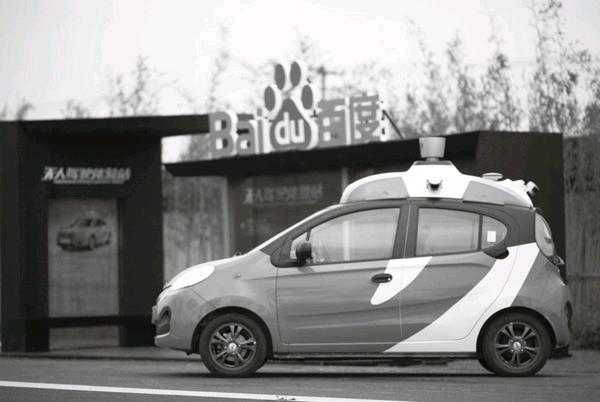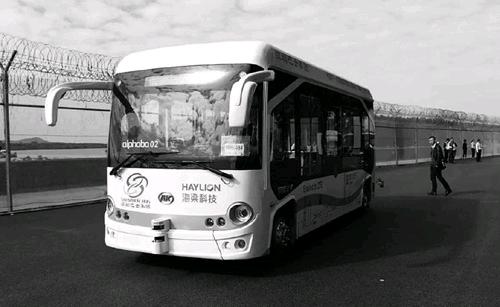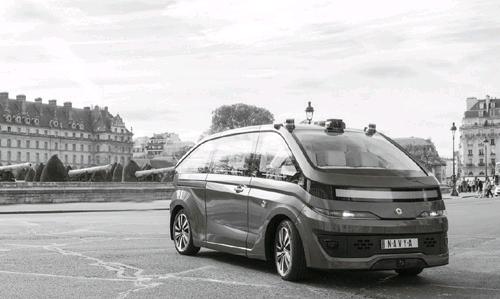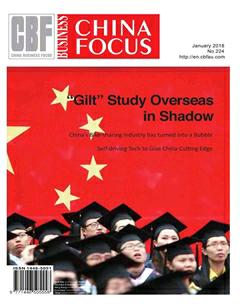Self-driving Tech to Give China Cutting Edge
Burgeoning self-driving technologies are expected to give China an edge in advanced driver assistance systems, algorithms and software, analysts said.
ADAS-which mainly include radar, cameras and ultrasonic sensors to enhance safe driving-currently has a relatively low rate of market penetration in China. “The rate in China is between 3 and 6 percent, while that in the United States or Europe is about 8 to 12 percent,” according to Zheng Fangdan, a senior consultant at Chinese research firm CCID Consulting Co. Thanks to the driverless-car push, the countrys ADAS market is estimated to grow to 87.7 billion yuan ($13.5 billion) in 2020 from 11.7 billion yuan in 2015, she said at a recent seminar.
The uptrend in China corresponds with estimated global figures. According to a Goldman Sachs report, the market for advanced driver-assistance systems and autonomous vehicles is estimated to grow from $3 billion in 2015 to $96 billion in 2025 and $290 billion in 2035. Algorithms and software, the “key building blocks” in delivering autonomous cars, will see substantial growth in the future, Zheng said.
Yu Jie, co-CEO of Beijing-based JointWyse Automotive Co, agreed. He said: “We predict further strides in software capabilities for interpreting visual and other inputs driven by sensors to make fully autonomous driving a reality.” Demand for sensors, networking and other elements vital to autonomous driving would also be created, he added.
Their comments came as China has been working to clarify the legal landscape for autonomous vehicles, which are on a fast ramp to commercial availability. Last month, the nations first guideline on road tests of autonomous motor vehicles was released by local authorities in Beijing.
Later, the Ministry of Transport said that it would conduct research prior to issuing policies this year on autonomous technologies. The government might issue the first nationwide license plate for testing driverless cars this June, Zhu Xichan, a professor from the School of Automotive Studies of Tongji University, said at the World Autonomous Vehicle Ecosystem Conference held in November.
Though the promise of autonomous cars is exciting, “innovation comes with risks”, said the report from Goldman Sachs. “Turning control over to software could lead to new hacking vulnerabilities and other hazards-liability issues that companies cant ignore. Cars that allow drivers to intervene in emergencies is a more likely scenario,”the investment bank said. Companies will likely focus on fine-tuning partial automation over the next few years, to overcome software challenges facing self-driving vehicles, it said.endprint
China began testing the self-driving bus technology on a public road in Shenzhen Saturday. Four Alphabus smart buses made the inaugural trial run on a route of 1.2 kilometers in the bonded zone of Futian. They ran at 10-30 km per hour and halted at three stops during the test. The buses used the limited self-driving technology, with a driver sitting behind the wheels, ready to take charge in an emergency.
The bus is developed under a pilot project on future new energy and smart bus system, initiated by the National Intelligent Transport Systems Center of Engineering and Technology and the Shenzhen Bus Group. The Alphabus smart system could respond to other road users and emergencies, could automatically spot pedestrians and vehicles, halt at regular bus stops, lower speed to avoid other road users, stops in emergency, and sidestep obstacles.
Self-driving technologies will likely enable Chinese companies to leapfrog developed countries in the automotive sector, as the value chain of the industry is expected to shift from hardware to software. “Self driving is an area where China and the rest of the world are on the same starting line. And many of the Chinese teams have staff with worldclass technological capabilities,” said Kuang Ziping, founding managing partner of Shanghai-based Qiming Venture Partners.
Globally, there are three major forces in the driverless race — established technology companies, startups and traditional automakers. “In terms of the size of the autonomous vehicle industry, the United States is a little bit ahead of China. But Chinese technology companies like Baidu, and startups like JingChi Corp, are doing as well as their US peers,” Kuang said. Conventional automotive firms, by comparison, are off the pace of early leaders in Germany or the US, he added.
Some reports have predicted a profound shift in the value chain of the automotive industry. Currently, the overwhelming majority — approximately 90 percent – of the value of a vehicle relates to the hardware, such as the power train, the chassis, interior seating and lighting, according to global consulting firm Strategy&. But in the future, the software layer — which provides the intelligence running the cars, and the applications layer, which offers services and content to meet consumers transportation needs — will collectively take up 60 percent of the value of a self-driving car, according to Morgan Stanleys estimates.endprint
Wang Jing, CEO of JingChi Corp, a startup focusing on self-driving technologies, said China has lagged behind in the automotive sector in the past, but things may change in the near future, as cars would gradually become “softwaredefined”. However, one of McKinseys surveys showed 61 percent of the re-spondents think that car original equipment manufacturers are expected to have the best autonomous driving technology. Only 12 percent expect technology players to build a wide lead in the field.
Beijing has releaserd a guideline for road tests of self-driving cars, which shows the authorities support for technological innovation through systematic innovation. The Beijing News comments:
According to the guidelines, independent legal entities registered in China can apply to road test self-driving vehicles as long as the vehicles satisfy the national safety requirements, conduct the road tests in designated areas and time periods and purchase necessary traffic accident liability insurance.
Road tests are an indispensable part of the research and development of autonomous vehicles. In the laboratory the researchers can only simulate actual driving conditions and cannot predict all eventualities. Only through road tests can self-driving vehicles improve their safety. Yet as an innovative technology, there are few regulations on the development of self-driving vehicles. Any in-novation should not undermine public interests. Legislators should act quickly in response to technological innovations to protect public interests.
Take self-driving vehicle as an example. Under the existing law anyone conducting road tests of driverless vehicles without approval will be fined. But laws and regulations should improve soon, in order to not only guaran- tee public interests but also encourage technological innovation. The guideline came four days after the Ministry of Industry and Information Technology unveiled a three-year plan to boost the application of artificial intelligence in the automotive sector among others.
According to an automotive industry development plan released in April, it is expected that by 2025, 80 percent of the new vehicles sold in the Chinese market will feature some autonomous driving functions. To take the lead in autonomous driving technology, China should pay attention to the legislation accompanying its development. Beijings guideline on self-driving vehicles road tests sets a good example on this issue. endprint
endprint

